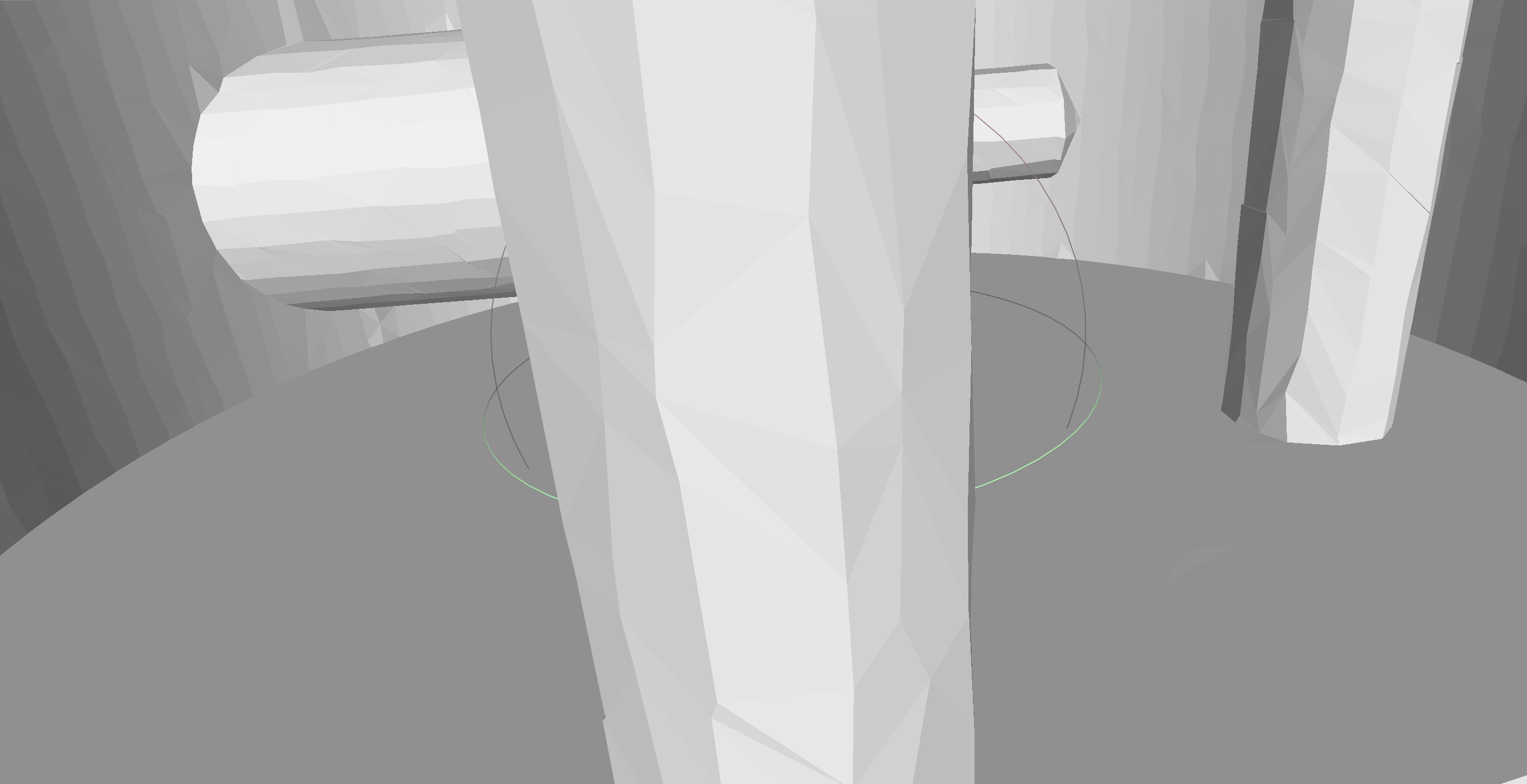-
Notifications
You must be signed in to change notification settings - Fork 30
New issue
Have a question about this project? Sign up for a free GitHub account to open an issue and contact its maintainers and the community.
By clicking “Sign up for GitHub”, you agree to our terms of service and privacy statement. We’ll occasionally send you account related emails.
Already on GitHub? Sign in to your account
Issues with ground truth SDF #11
Comments
|
If you observe carefully, you can find that the 4 pillars also exist in the ground truth. However, the ground truth has a very thin layer of surface that blocks the pillars from view. Because the layer is too thin, MC and NDC cannot reconstruct the surface (there is no sign change), and only UNDC can reconstruct it. |
|
UNDC's ground truth intersections are computed by checking whether there are intersection points on cell edges, in contrast to NDC where only sign changes are checked. The vertex position computation is the same for NDC and UNDC, by solving the error functions in DC. |
|
Hello, Thanks a lot for your super-quick response, much appreciated. I've a follow-up question,
In DC, the error function requires intersection point along a cell, right? i.e, if the surface is too thin and there is no sign change, how do you compute QEF? |
|
The QEF only requires intersection points and their gradients. You don't need sign changes to determine intersection points; just compute them directly from the ground truth mesh. |
|
If I understand right, the place on face of a cell where the thin surface intersects along its normal was used for solving QEF in the case of UNDC? |
|
Not really. the normal is obtained from the thin surface. You can read the code for details. |
|
Oh right, I see. Thanks for the quick clarification, much appreciated. |

Hello,
I observe that the GT SDF provided has some faulty reconstruction. In the below picture, I visualise and compare interior of the same shape. Clockwise from top-left are, GT, Marching Cubes on provided SDF, Dual Contouring. As you can see, the GT does not contain the 4 pillars which are present in the other three shapes. What is the reason behind this?
Edit: This is shape
00007937.objfrom the test set.The text was updated successfully, but these errors were encountered: